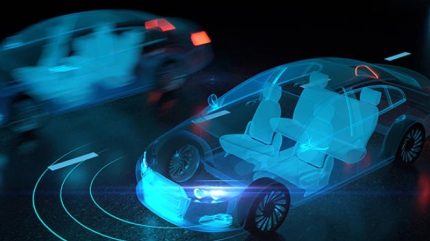
In this guest opinion piece, exclusive to Just Auto, Dipti Vachani, SVP and GM, Automotive Line of Business, Arm (a UK-based semiconductors company), outlines the transformative implications of the rise of the ‘AI-defined vehicle’.
While electrification and connectivity have shaped recent automotive advancements, artificial intelligence (AI) is the real game-changer. This is not just another car feature; it’s the catalyst for the next wave of automotive transformation called the AI-defined vehicle era.
Where software-defined vehicles (SDVs) centralize control and deploy updates from the cloud to the car, AI-defined vehicles go even further, embedding intelligence directly into real-time decision-making loops across every domain and application.
These systems don’t just run software, but actively learn from their environments, personalizing the driving and passenger experience. Whether it’s an intuitive driving system that adjusts to the environment to support safety, an interactive in-vehicle assistant that can help organize your day, or intelligent vehicle system controls that optimize energy and efficiency based on load and road conditions, drivers have come to expect safer, smarter, AI-defined experiences.
Working closely with global automakers and Tier 1s over the past few years, it’s quickly become clear that the transition to AI-defined vehicles is not theoretical. It’s happening now.
In fact, 75% of global automakers plan to integrate generative AI into vehicles by the end of 2025, according to research from PYMNTS. The question among industry leaders is no longer if AI will drive the next generation of vehicles, but how quickly it can be scaled in a safe and secure manner.
For OEMs, this presents not just a shift in vehicle capabilities, but in development philosophy, with AI-defined vehicles demanding a new kind of compute foundation and collaborative model. Those who don’t move quickly risk falling behind in safety, experience, and brand relevance.
Here are three strategic focuses that OEMs must prioritize to lead in the era of AI-defined vehicles.
Hardware matters: Compute at the edge
For new AI-defined vehicle capabilities to work seamlessly, automakers need compute that is immediate, reliable and secure. This is why more AI is being pushed to the edge – in the vehicle – as opposed to the cloud that requires constant connectivity.
Whether detecting a pedestrian or responding to voice commands, AI-defined vehicles need to respond in real-time without compromising battery life. This requires a heterogenous compute approach that blends compute engines to manage the diversity of AI tasks in the car, so the right processor handles the right workload. For example, CPUs are best at real-time safety critical decision and logic, GPUs for parallel workloads like computer vision, and AI accelerators for deep learning tasks.
Alongside heterogenous compute, AI-defined vehicles need scalable architecture across the hardware that allows OEMs to reuse software stacks and development pipelines across trim levels and model variants. This reduces development time and ensures AI applications and features are accessible across a broad range of vehicles, from entry-level to premium high-end luxury.
Finally, as vehicles become more intelligent, hardware needs to remain secure and fail-safe. Safety-critical features that are enhanced by AI, such as braking, steering, and navigation, must comply with rigorous standards like ISO 26262 and ISO/SAE 21434 to ensure resilience and trust. Alongside these built-in safety and cybersecurity standards, hardware platforms must include safety islands, redundancy, secure boot, and memory isolation to protect against both malfunction and malicious attacks.
The software stack: Faster, more accurate decision-making
Hardware is only one part of the puzzle. To deliver truly intelligent AI-defined vehicles, OEMs need cohesive software stacks that support AI development from cloud to car.
Traditional modular AI development – with separate models for detection, segmentation, classification, and control – is moving towards end-to-end software stacks that integrate everything from model training to deployment. These models are trained on massive datasets of real-world driving behavior and can directly map sensor inputs to control outputs. The result: faster, more accurate, and more adaptable decision-making, alongside reduced engineering effort.
Virtual prototyping: accelerated development cycles
Traditionally, vehicle design and development were tied to the physical availability of silicon. That model no longer works in an AI-first world.
The availability of silicon-free prototyping transforms the design process for the automotive ecosystem, as they don’t need to wait for the physical silicon to be in production. This significantly accelerates the development and deployment of silicon and software in AI-defined vehicles for a far quicker time-to-market. Enabling this early development is critical to keeping pace with the exponential growth in AI capabilities and evolving models.
A new era of automotive innovation
The opportunities that lie ahead for OEMs are significant. OEMs that embrace AI-defined design and development today will be the ones setting the standard for innovation, safety, and user experience tomorrow.
The AI-defined vehicle isn’t a vision of the future, it’s already in motion. For automotive OEMs, now is the time to act.
By Dipti Vachani, SVP and GM, Automotive Line of Business, Arm
Dipti Vachani Senior Vice President and General Manager, Automotive Line of Business

Dipti leads the organization responsible for delivering Arm-based solutions that drive new opportunities in automotive.
Previously, Dipti served as Vice President and General Manager of the Product Management and Customer Enablement division in the IoT Group at Intel. At Texas Instruments, Dipti held several leadership positions and led the creation of the company’s Sitara brand of Arm MPUs.
Dipti is on the Women’s Leadership Council for the Global Semiconductor Association. She holds a BS in Computer Engineering from Texas A&M, an Executive MBA degree from the University of Texas, and is a graduate of the Executive Education programs at Stanford, Harvard, and Cambridge business schools.







